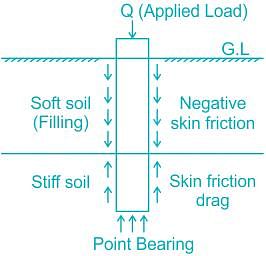Civil Engineering (CE) Exam > Civil Engineering (CE) Tests > Foundation Engineering > Test: Deep Foundation - Civil Engineering (CE) MCQ
Test: Deep Foundation - Civil Engineering (CE) MCQ
Test Description
5 Questions MCQ Test Foundation Engineering - Test: Deep Foundation
Test: Deep Foundation for Civil Engineering (CE) 2025 is part of Foundation Engineering preparation. The Test: Deep Foundation questions and answers have been
prepared according to the Civil Engineering (CE) exam syllabus.The Test: Deep Foundation MCQs are made for Civil Engineering (CE) 2025 Exam. Find important
definitions, questions, notes, meanings, examples, exercises, MCQs and online tests for Test: Deep Foundation below.
Solutions of Test: Deep Foundation questions in English are available as part of our Foundation Engineering for Civil Engineering (CE) & Test: Deep Foundation solutions in
Hindi for Foundation Engineering course. Download more important topics, notes, lectures and mock
test series for Civil Engineering (CE) Exam by signing up for free. Attempt Test: Deep Foundation | 5 questions in 15 minutes | Mock test for Civil Engineering (CE) preparation | Free important questions MCQ to study Foundation Engineering for Civil Engineering (CE) Exam | Download free PDF with solutions
Detailed Solution for Test: Deep Foundation - Question 1
Detailed Solution for Test: Deep Foundation - Question 2
Detailed Solution for Test: Deep Foundation - Question 3
Test: Deep Foundation - Question 4
Which test is used for separating the load carried by the pile into the skin friction and point bearing resistance?
Detailed Solution for Test: Deep Foundation - Question 4
Test: Deep Foundation - Question 5
What is the effect of negative skin friction on the load carrying capacity of pile foundations?
Detailed Solution for Test: Deep Foundation - Question 5
|
18 videos|46 docs|27 tests
|
Information about Test: Deep Foundation Page
In this test you can find the Exam questions for Test: Deep Foundation solved & explained in the simplest way possible.
Besides giving Questions and answers for Test: Deep Foundation, EduRev gives you an ample number of Online tests for practice




















